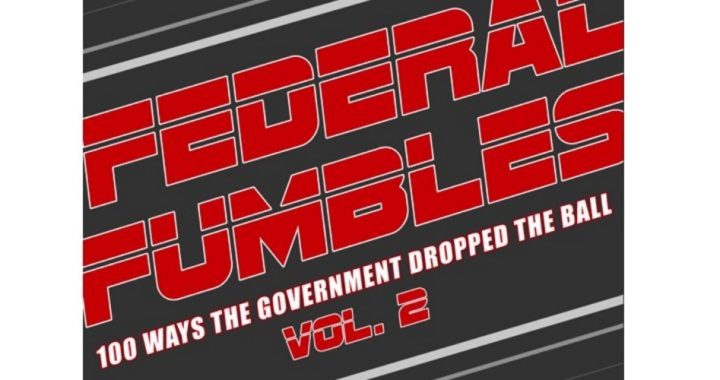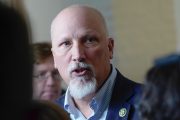
Senator James Lankford (R-Okla.) issued his second annual Federal Fumbles study last week, totaling $247 billion in wasteful projects and nonsensical studies. When fellow Oklahoma Senator Tom Coburn retired, the job of finding and then criticizing wasteful projects fell to Lankford.
He is up to the task:
In 2016, the Fish and Wildlife Service paid an $180,000 grant for the development of a method to count and tag the sea duck population in America. Only our government could commission a study to count ducks, “one little ducky, two little duckies…”);
The National Endowment for the Humanities, the National Endowment for the Arts and the Institute of Museum Services spent $495,000 to fund a temporary exhibit for sights, sounds, tastes and yes, even smells of the medieval period. They must have gotten the idea for this from a Monty Python sketch (“bring out your dead!”);
The General Services Administration, in decorating a Los Angeles Courthouse, awarded a $ 1 million contract for a photograph of a Yosemite waterfall to be cut up in six pieces and displayed on different floors. I would have done it for $50 dollars.;
The USDA gave $250,000 to Sunsweet, a privately owned cooperative which has revenues in the hundreds of millions of dollars annually, to help them to market a new prune supplement. This one makes me sick to my stomach (so do prunes);
The Department of Justice gave over 300 million in grants to sanctuary cities to help them fight crime. Of course one way to fight the crime would be not grant sanctuary to illegal immigrants, er.. criminally trespassing aliens; and
Obama’s $1.7 Billion in “ransom” payments to Iran. (Yeah I know Obama crosses his heart, pinky swears that it wasn’t ransom — he said the same about keeping your doctors with Obamacare).
This isn’t the end of government waste, nor even a good beginning, said Lankford: “This is not a comprehensive book; this is not trying to list everything in the federal government where there is an issue.”
If that were Lankford’s task — finding “everything … where there is an issue” — he would be stymied by cost reduction studies that were so outrageous that they were deliberately buried and removed from public view. Take, for example, the revelation from Bob Woodward (yes, that Bob Woodward) of the Washington Post who just found a Pentagon study that was completed in January 2015 but buried because it was so flagrantly outrageous that it might have encouraged Congress to cut its budget further. Wrote Woodward:
After the project documented far more wasteful spending than expected, senior defense officials moved swiftly to kill it by discrediting and suppressing the results.
The study, ordered by a deputy defense department official, was produced by the Defense Business Board, a federal advisory panel made up of corporate executives, along with consultants from McKinsey and Company. The study concluded that one quarter — that’s $125 billion — of Pentagon’s annual budget, could be saved over the next five years. Once it was released, the report was suppressed, including removal of its 77-page summary from the DOD website.
And then there’s the last-minute, scorched-earth, “midnight” regulations expected from the Obama administration as that unlamented presidency enters its final days. These regulations aren’t necessarily wasteful. The waste, in the form of compliance and federal oversight, comes later. As Sam Batkins, director of regulatory policy at the American Action Forum, noted, “[Our] review of the data found at least $75.3 billion in planned regulatory costs, including the majority ($44.1 billion) during the “midnight” regulatory period from November 2016 to January 2017. This would be in addition to the more than $150 billion in final regulatory costs already published [by the Obama administration] in 2016.
President Ronald Reagan said that the federal government’s view of the economy could be summed up in a few short phrases: “If it moves, tax it. If it keeps moving, regulate it. And if it stops moving, subsidize it.”
Republican Illinois Senator Everett Dirksen spoke of the enormity of the federal government in the late 1960s: “A billion here, a billion there, and pretty soon you’re talking about real money.” Adjusted for inflation, thanks to the Federal Reserve, along with even greater waste and duplication, Dirksen might now say: “A hundred billion here, a hundred billion there, and pretty soon you’re talking about real money.”
An Ivy League graduate and former investment advisor, Bob is a regular contributor to The New American magazine and blogs frequently at LightFromTheRight.com, primarily on economics and politics. He can be reached at [email protected].



